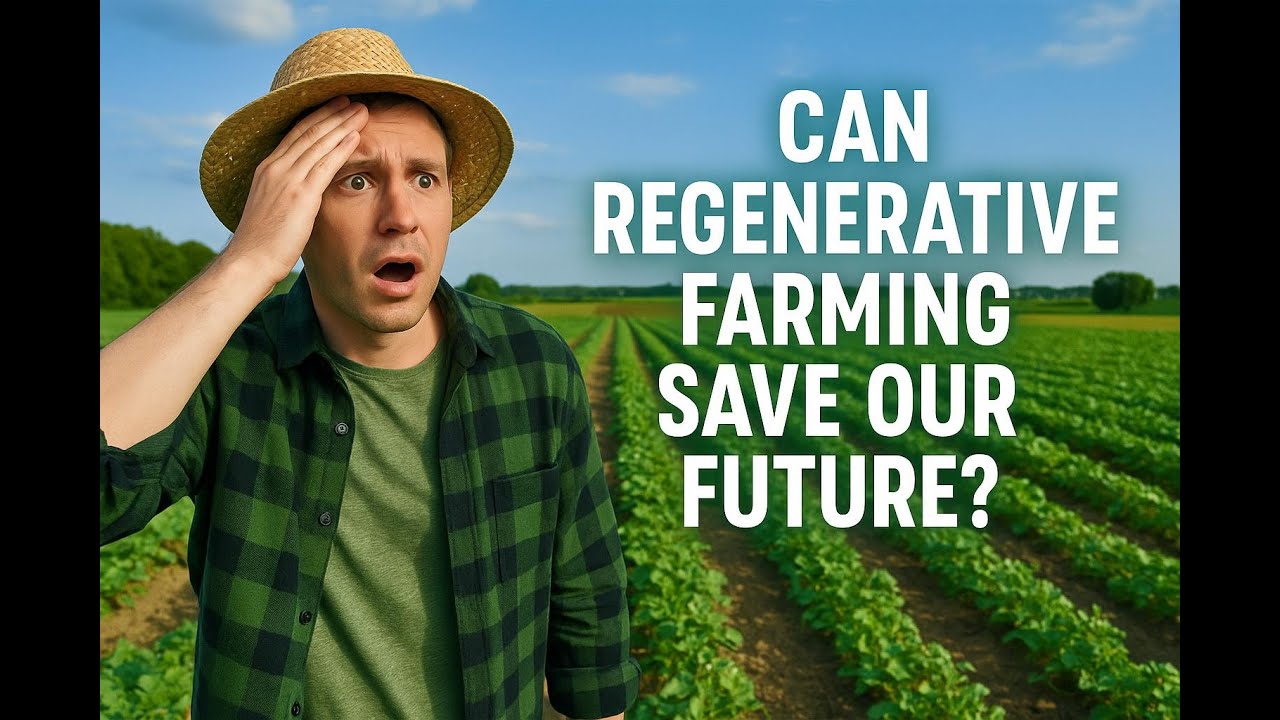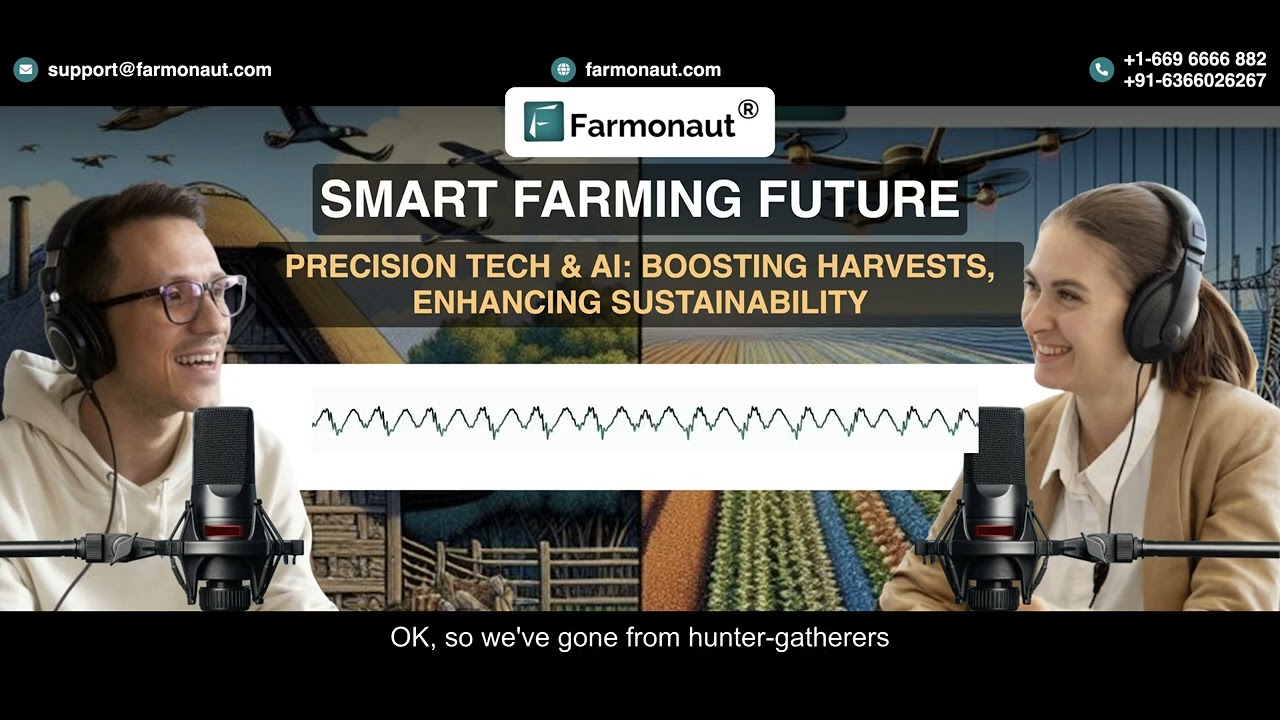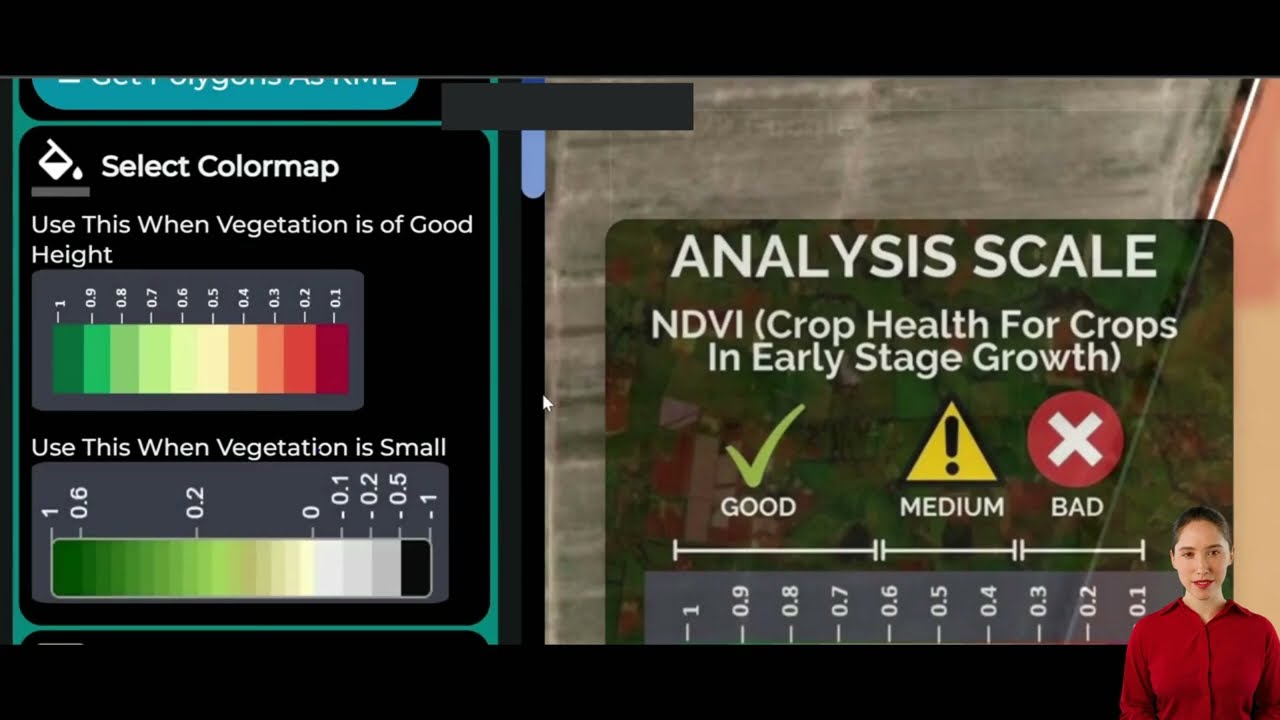Barley Bar A Cereal: Buy Barley Oat & Barley Food 2026
Table of Contents
- Introduction: Barley Bar A Cereal – Shaping Our Future
- Barley Trivia
- Agricultural Importance of Barley Bar A Cereal in 2026
- Varieties of Barley: Bere Barley, Two-Row, Six-Row & More
- Barley and Sustainable Agriculture Systems
- Barley’s Role in Addressing Climate Change & Food Security
- Barley in Our Diet: Nutrition, Food Products & Barley Cereal Blends
- Barley’s Future: 2026 Market Trends & Global Demand
- Comparative Table: Barley vs. Other Cereals
- Barley Beyond Food: Feed, Malting & Brewing Industries
- Farmonaut & Barley: Technology Empowering Sustainable Farming
- More Barley Trivia
- Farmonaut Solutions: Satellite Monitoring, Traceability, Carbon Footprinting
- FAQ: Barley Bar A Cereal in 2026
- Conclusion: The Vital Role of Barley Bar A Cereal
Introduction: Barley Bar A Cereal – Shaping Our Future
Barley bar a cereal—also known as Hordeum vulgare—remains one of the world’s oldest and most important cereal grains. As we journey through 2025 into 2026, barley holds a unique position spanning across agriculture, food security, and sustainable farming practices globally. Its significance is underscored by its wide usage in food, beverage, and feed production, and its pivotal role in adapting agricultural systems to meet the challenges posed by climate change.
The global need for resilient, nutritious, and climate-smart crops is rapidly growing. As diverse diets and sustainability-conscious consumers drive market demand for alternative grains, barley—with its remarkable adaptability and nutritional profile—continues to evolve and shape the future of food systems.
Barley Trivia
“One hectare of barley can produce enough cereal to feed about 350 people for a year.”
Agricultural Importance of Barley Bar A Cereal in 2026
Barley is truly a vital crop in agriculture—not just because it’s one of the oldest cereal grains known to humanity, but because of its ongoing importance for food security, economic value, and agricultural diversity. Grown globally and extensively in temperate regions, barley bar a cereal is renowned for its adaptability to a wide range of climatic conditions and soils. These features make it a crucial staple crop for millions of farmers and communities.
The importance of barley is evident in its multiple uses:
- As a food grain—barley is used for porridges, cereals, breads, and soup bases.
- As a critical ingredient in the malting and brewing industries.
- As a highly nutritious feed for livestock, supporting meat and dairy production.
- As a rotation and cover crop in sustainable farming systems, improving soil health and biodiversity.
With climate unpredictability and rising global demand for resilient food systems, barley’s role in the future of agriculture—especially in 2026 and beyond—cannot be overemphasized.
Varieties of Barley: Bere Barley, Two-Row, Six-Row & More
Diversity in barley varieties is a strength that ensures its future value in food security and farming resilience. The two major types that dominate global production are:
- Two-Row Barley: Widely used in malting and brewing due to its high starch and low protein content. Suited to beer and malt-based products.
- Six-Row Barley: Contains higher protein, making it valuable both for animal feed and as an ingredient in certain food products and blends.
A fascinating heritage variety is bere barley, primarily cultivated in Scotland and some northern Europe regions. Bere barley has gained renewed attention for its hardiness in poor soils and unique nutritional profile. Its contribution to diversified agriculture cannot be overstated—especially as farmers and scientists seek varieties adapted to changing climatic conditions and increased pressures from fungal diseases such as ramularia leaf spot and net blotch.
Modern barley breeding focuses on:
- Drought tolerance and disease resistance.
- Enhancing yields under erratic weather patterns.
- Developing barley oat blends and other specialty grains for the growing health food market.
Barley and Sustainable Agriculture Systems
Sustainable farming practices are essential for long-term security of our food systems. Here, barley remains a key player, due to its versatility in crop rotations, positive impact on soil health, and ability to fit into diversified farming systems.
Key Sustainable Practices with Barley
- Crop Rotation: Alternating barley with legumes and root crops reduces disease pressure and enhances soil fertility.
- Cover Cropping: Barley is used as a fast-growing cover crop, suppressing weeds, reducing the need for herbicides, protecting soil from erosion, and enhancing biodiversity.
- Resource Efficiency: Barley’s relatively short growing period and moderate water requirements make it suitable for resource-efficient agriculture.
- Adaptability: Its ability to perform in a wide range of climatic conditions offers stability in unpredictable environments.
In 2026, the adaptation of precision agriculture—using satellite data, drones, and AI-driven recommendations—is further improving the sustainability of barley production, optimizing inputs, minimizing waste, and protecting natural resources.
Barley’s Role in Addressing Climate Change & Food Security
The future of food security will depend on resilient crops that can thrive in the face of climate change. Barley’s quick maturity, relatively shallow root system, and low input requirements have made it a buffer crop against erratic weather patterns.
How Barley Is Shaping Climate-Resilient Agriculture in 2026
- Developing climate-resilient varieties: Advances in barley breeding are focusing on drought and heat tolerance, better disease resistance, and adaptability to shifting climatic conditions.
- Reducing greenhouse gas emissions: Barley fields sequester more carbon than many other cereal systems and use less nitrogen, helping to reduce the carbon footprint of agriculture overall.
- Supporting diversified farming systems: Barley supports both food and feed needs, allowing flexibility and security for farmers globally.
Barley is an essential ingredient for building future-proof food systems, contributing both to immediate dietary needs and to the long-term health of agricultural ecosystems.
Barley in Our Diet: Nutrition, Food Products & Barley Cereal Blends
Barley’s nutritional benefits and its role as a food cereal are gaining worldwide recognition. In 2026, barley cereal and innovative barley oat blends are at the forefront of health trends and dietary needs.
Nutritional Profile of Barley
- Dietary Fiber: Barley is particularly rich in beta-glucan, a soluble fiber known for lowering cholesterol and supporting heart health.
- Essential Vitamins & Minerals: Including B-vitamins, iron, magnesium, zinc, and selenium.
- Plant-Based Protein: With roughly 12g per 100g grain, barley provides a key protein source, especially for vegetarian and vegan diets.
- Rich in Antioxidants: Barley contains phenolic compounds that help fight oxidative stress.
Barley Food Products & Their Uses
- Hulled barley: Minimally processed, retains bran and germ, used in soups and stews.
- Pearled barley: Polished, cooks quickly; popular in breakfast cereals and side dishes.
- Barley flakes: Steamed and rolled, similar to oat flakes, ideal for porridge and granola.
- Barley oat blends: Combine health benefits of both grains—for ready-to-eat cereal products and bakery items.
Consumer awareness of wholegrain and high-fiber diets has resulted in growing global demand for barley food and cereal products. “Buy barley” campaigns are common in Europe, the Americas, and Asia, emphasizing barley’s sustainability and health value.
Gluten and Special Diets
Barley contains gluten, making it unsuitable for those with celiac disease but valuable in blending with gluten-free grains for wider dietary options. It remains a central component for health-conscious consumers focusing on fiber, minerals, and heart-healthy food sources.
Barley’s Future: 2026 Market Trends & Global Demand
By 2025, the world’s barley production is expected to exceed 150 million tonnes—a critical milestone supporting global food security. As we enter 2026, these are the trends shaping barley’s role in world agriculture:
- Rising Health Awareness: Increasing preference for wholegrain cereals is driving demand for barley cereal and barley oat blends.
- Expansion in New Markets: Countries outside traditional barley zones—East Asia, the Middle East, and Sub-Saharan Africa—are growing barley for its adaptability and climate resilience.
- Technological Integration: The use of digital and satellite solutions is enabling farmers to optimize barley crop performance and sustainability.
- Innovation in Products: Food companies are developing new products—including energy bars, fermented drinks, gluten-free blends—tapping into barley’s nutritional and functional benefits.
- Heritage Revival: Bere barley and other heritage varieties are gaining attention, especially in Scotland and northern Europe, for their unique profiles and benefits to local food movements.
The strategic promotion of barley through educational campaigns and consumer incentives—Buy Barley initiatives—demonstrates the crop’s enduring relevance globally.
Comparative Table: Barley vs. Other Cereals on Sustainability and Nutrition
| Cereal Type | Water Usage (L/kg, est.) | Nitrogen Requirement (kg/ha, est.) | GHG Emission (kg CO₂e/kg, est.) | Climate Resilience | Protein Content (g/100g, est.) | Dietary Fiber (g/100g, est.) | Use in Food Security (2025 Outlook) |
|---|---|---|---|---|---|---|---|
| Barley | 1,400 | 70–120 | 0.58 | High | 12 | 15–17 | Central in sustainable, climate-adapted diets |
| Wheat | 1,800 | 140–180 | 0.70 | Moderate | 11–13 | 12–13 | Key staple, but higher footprint |
| Rice | 2,500 | 100–150 | 1.23 | Low (Flooding sensitive) | 7–8 | 2–3 | Major staple, but water-intensive |
| Oats | 1,100 | 50–100 | 0.41 | Moderate–High | 13 | 10 | Popular for health foods |
Barley’s outstanding performance in both sustainability and nutrition makes it a foundation for climate-ready diets in 2026. Monitoring carbon impact is more important than ever—see how carbon footprinting tools can help keep barley’s environmental footprint low in modern farming.
Barley Beyond Food: Feed, Malting & Brewing Industries
While barley’s function as a food cereal is significant, its far-reaching importance includes the brewing industry and livestock feed production.
Malting & Brewing
- Barley is the premier choice for malting, forming the backbone of the global beer industry.
- Quality requirements for malting barley drive innovation in breeding and post-harvest management.
- The importance of malting barley in traditional brewing is central to local economies, especially in Europe, North America, and Australia.
Feed Industry
- Barley’s high digestibility and protein content make it a valuable animal feed grain, particularly in temperate-climate livestock regions.
- Integrating barley feed into rotation systems supports food security by stabilizing supply chains in meat and dairy sectors.
The interdependency between barley production and major global industries ensures its market value and relevance in future agricultural strategies.
Farmonaut & Barley: Technology Empowering Sustainable Farming
At Farmonaut, we are helping transform how barley and other cereal crops are monitored and managed in today’s farming landscape. Our satellite-based technologies empower farmers, researchers, and agronomists to adopt high-efficiency, sustainable practices for barley cultivation globally.
Key Technological Solutions for Barley and Cereal Crops
- Satellite Crop Monitoring: Using real-time, multispectral satellite imagery, we enable assessment of crop health, detect stress, optimize input use, and reduce resources lost to erratic weather or diseases.
- AI Advisory Systems: Our JEEVN AI analyzes satellite data to generate tailored recommendations—enhancing barley’s performance in different regions and supporting data-driven farming.
- Environmental Impact Tracking: Track carbon outputs and make informed choices for sustainable barley farming with actionable insights.
- Blockchain Traceability: Provides supply chain transparency, supporting provenance in bere barley and specialty grains.
Farmonaut’s advanced yet accessible platform puts these capabilities in the hands of individual growers, small businesses, and larger enterprises—democratizing technology for all.
Try our intuitive web, Android, or iOS apps for streamlined barley crop monitoring, input optimization, and yield enhancement—no hardware or technical background required!
Developers and businesses can integrate our powerful insights directly via our Farmonaut API. Read the developer docs for detailed implementation.
More Barley Trivia
“By 2025, global barley production is expected to exceed 150 million tonnes, supporting climate-resilient food systems.”
Farmonaut Solutions: Satellite Monitoring, Traceability, Carbon Footprinting
Our goal at Farmonaut is to support barley and other cereals with affordable, high-quality technological solutions designed to enhance agricultural sustainability, food security, and supply chain trust.
-
Traceability:
Ensure your barley and heritage grains preserve provenance, transparency, and trust from farm to consumer using leading blockchain technology. -
Crop Loans & Insurance:
Reduce risk, speed up loan and insurance access for barley farmers using satellite-verified documentation and field insights. -
Large-Scale Farm Management:
Simplify monitoring, scheduling, and reporting for expansive cereal and barley operations.
Explore carbon emission tracking, end-to-end supply automation, and fleet management for your barley supply chain or farm with our advanced tools.
FAQ: Barley Bar A Cereal in 2026
What makes barley bar a cereal vital for future agriculture?
Barley’s adaptability to a wide range of soils and climates, high fiber and protein content, moderate water/nitrogen needs, and its dual use for food, feed, and malting industries cement its vital position in future-focused agriculture.
How is bere barley different from regular barley?
Bere barley is an ancient variety mainly cultivated in Scotland and northern Europe, noted for exceptional hardiness and resilience on poor soils. Its unique nutritional profile and heritage status have renewed its popularity in sustainable, specialty food systems.
Why is barley considered sustainable compared to wheat or rice?
Barley uses less water and nitrogen, emits lower greenhouse gases, and adapts better to erratic climates. It fits perfectly into crop rotation systems, improves soil, and offers high yields under tough conditions.
What are the main food products made from barley?
Hulled and pearled barley, barley flakes, porridge cereals, bakery items, energy bars, soups, and barley oat blends are increasingly available in the 2026 food market.
How can technology enhance barley farming?
Remote sensing, AI-driven advice, blockchain traceability, and environmental tracking—like those offered via the Farmonaut platform—empower farmers to maximize yields, minimize inputs, and adapt quickly to changing challenges.
Conclusion: The Vital Role of Barley Bar A Cereal
Barley bar a cereal remains a cornerstone in both ancient and modern agriculture. From its crucial role in sustainable farming, soil health, and food security, to its diverse nutritional profile for human diets and feeds, barley continues to evolve to meet the needs of a growing, climate-challenged world.
The future of barley—in food products, market growth, and sustainable farming practices—appears brighter than ever. Its adaptability, resilience, and unique value will ensure it remains a vital cereal crop shaping agriculture and food systems well into and beyond 2026.
Barley isn’t just a grain—it’s a solution, a tradition, and a beacon for a better agricultural future.


















